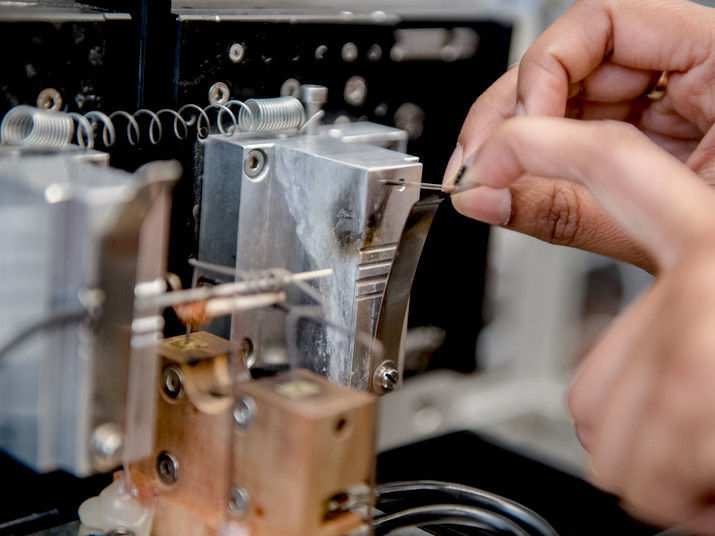Sophisticated monitoring array to address mystery of uranium plume
Groundwater contamination remains significantly unchanged for 10 years
Scientists have puzzled for years about why uranium contamination in groundwater continues to exceed drinking water standards in an area located at the south end of the Hanford Site. The Department of Energy wants answers to why the uranium persists.
Now, an innovative system has been installed for field experiments to better understand this complex site and to support future cleanup decisions. The site is one of three Integrated Field Research Challenge, or IFRC, locations supported by DOE's Office of Science to investigate fundamental science issues important to contaminant transport and groundwater remediation. New insights may offer scientific advances in environmental cleanup beyond Hanford.
Scientists at DOE's Pacific Northwest National Laboratory are closer to having answers to the mystery with a unique subsurface experimental system containing nearly three dozen monitoring wells equipped with sophisticated instrumentation. The entire subsurface surrounding the wells will be comprehensively characterized to enable a complete accounting of the processes that occur beneath the surface that contribute to the persistent groundwater contamination.
"The plume has baffled researchers for more than a decade," said PNNL Project Manager John Zachara, who leads a team of experts in subsurface geochemistry, hydrology and microbiology. "But we believe this new approach will allow us to better understand the sources and migration behavior of uranium in the subsurface."
The project promises to provide one of the most comprehensive evaluations of the complex 300 Area subsurface along the river in more than 40 years. Positioned like a triangular chessboard within an approximate 100-meter plot of contaminated ground, the array of 35 monitoring wells is near the location where large volumes of contaminated wastewater were disposed. The waste originated from nuclear fuel fabrication facilities that supported the nation's weapons program decades ago. Scientists have designed an elegant, yet adaptive site, to study the effects of groundwater level, flow direction and composition on uranium concentrations in groundwater, and uranium migration to the Columbia River.
The Hanford IFRC project allows researchers to perform injection experiments using waters of different temperature and composition pumped from other locations in the 300 Area groundwater plume. The variability permits scientists to probe migration pathways through the subsurface and examine factors that control uranium release from the historically contaminated sediments. Time-based water level and composition data gathered from the robust geophysical and geochemical monitoring system will enable researchers to develop three-dimensional plume maps helping to develop improved uranium migration models.
The effort will provide a major breakthrough in understanding how the rhythmical rise and fall of the river interacts with the groundwater and uranium sources, according to Mike Thompson, DOE physical scientist.
Most read news
Topics
Organizations
Other news from the department science

Get the analytics and lab tech industry in your inbox
By submitting this form you agree that LUMITOS AG will send you the newsletter(s) selected above by email. Your data will not be passed on to third parties. Your data will be stored and processed in accordance with our data protection regulations. LUMITOS may contact you by email for the purpose of advertising or market and opinion surveys. You can revoke your consent at any time without giving reasons to LUMITOS AG, Ernst-Augustin-Str. 2, 12489 Berlin, Germany or by e-mail at revoke@lumitos.com with effect for the future. In addition, each email contains a link to unsubscribe from the corresponding newsletter.
Most read news
More news from our other portals
Last viewed contents

Monitoring the lifecycle of tiny catalyst nanoparticles
PerkinElmer Elects Samuel Chapin to Board of Directors

Photometry Tips and Tricks - Practical tips to selected photometric applications
Malvern Instruments and Postnova Analytics co-operate to deliver combined solution for characterizing challenging particulate systems





















































